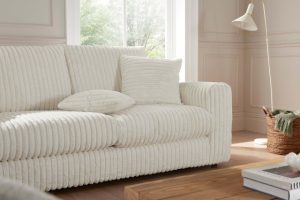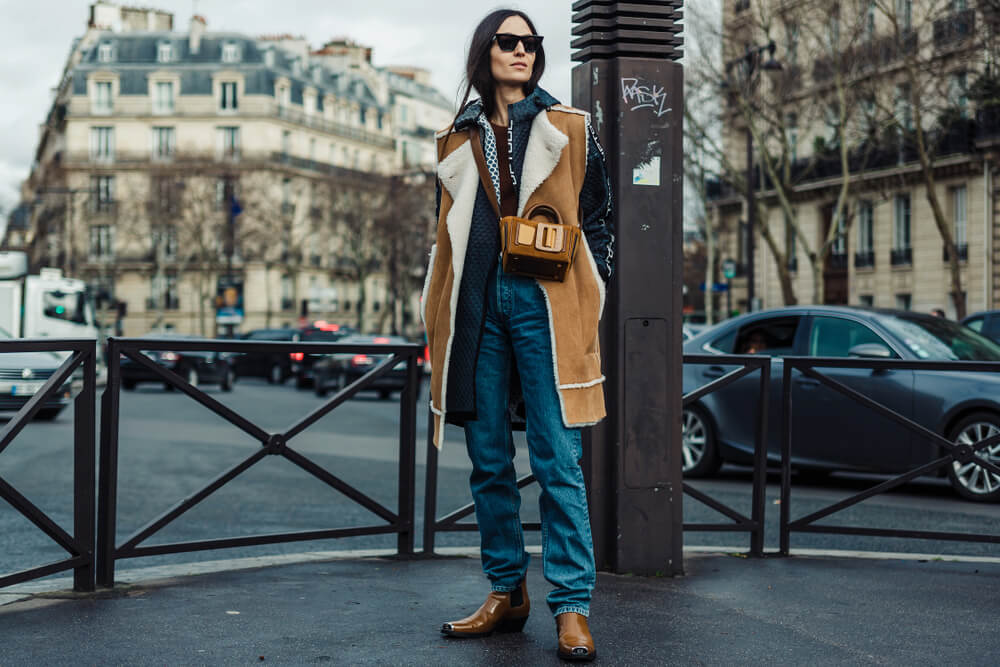French winter style has a reputation for looking effortless and polished, even when it’s cold enough to see your breath. And while winters in Paris are milder than in many U.S. cities, the way Parisians layer—leaning on wool, sleek leather, and smart accessories—works just as well in New York, Chicago, Denver, you name it. Below I’ll break down the core pieces, why they work (with real data, not just vibes), and how to wear them without feeling like you’re in a costume. I’ll be honest, I’ve tested most of this on slushy Manhattan mornings and it holds up, tbh.

What French winter really feels like (and why that matters)
First, some context. Average January temperatures in Paris hover around the mid‑30s to mid‑40s °F (roughly 2–7 °C), according to Météo‑France. That’s warmer than New York City’s 1991–2020 NOAA normals (about 26–39 °F) and much warmer than Chicago’s (around 18–31 °F). France still knows real cold—Mouthe, nicknamed “La Petite Sibérie,” set a national record of −41 °C in 1985 (source; see also Météo‑France). But Paris’s damp chill calls for breathable insulation and wind-blocking layers rather than expedition-level puffers. The lesson: build warmth with smart fabrics and proportionate coverage, not just bulk.
The French approach: materials, proportion, and layering
Three principles show up again and again on Paris sidewalks:
- Materials that trap air without bulk (wool, merino, dense weaves) and that still insulate when slightly damp (wool’s natural crimp is a hero here).
- Proportions that cover more skin—midi hems, high shafts on boots, long coat hemlines—so you’re warmer with fewer layers.
- Layering basics: a thin, breathable base; an insulating mid‑layer; and a weather‑blocking outer (the REI layering model is a great primer).
5 winter staples French women reach for (and how to make them work stateside)
1) The long wool coat (your 80% outfit finisher)

More often than a puffer, you’ll see full-length wool and wool‑blend coats—wraps, double-breasted guardsman styles, elongated peacoats. Dense weaves like melton (what melton cloth is) block wind remarkably well. Wool keeps insulating even if a light drizzle hits because the fiber structure traps air and manages moisture (Woolmark).
- What to look for: dense hand, mid‑calf or longer hem, substantial lapels (help shield the chest), and either a belt or good overlap at the buttons to prevent drafts.
- Fabric notes: pure wool, recycled wool, or wool blends with cashmere for softness. Vegan options? Try tightly woven cotton or technical “wool‑like” synthetics layered smartly.
- Certifications: prefer Responsible Wool Standard (RWS) and OEKO‑TEX Standard 100 labeling.
- Care: use a fabric brush, steam to refresh, and dry clean sparingly (care guidance).
Styling: Keep the underlayers slim so the coat skims rather than bulks. A fitted turtleneck + straight trouser + ankle or knee boot is basically the uniform. Dont overthink it.
2) Knee‑high (or taller) boots that meet the hem

Rather than ditch midi skirts, French women swap low shoes for tall boots so the shaft meets or nearly meets the hem. The effect: more coverage, less wind exposure, still sleek. For real winter, add thermal socks and a grippy outsole.
- Fit: look for a 15–17 in. shaft with a close (not tight) calf; slight block heel for stability.
- Traction: if you face ice, prioritize tread. The APMA’s winter guidance recommends supportive, slip‑resistant soles; for serious ice, check independent traction ratings like Rate My Treads.
- Care: after salted streets, wipe down leather and treat promptly—salt can stain and dry out hides (Wirecutter’s how‑to).
Sustainability tip: for leather, look for Leather Working Group–certified tanneries. If you prefer vegan, PU‑based faux leather is typically more flexible than PVC; read care labels and avoid high heat (see ECHA’s overview on plastics & additives for general context).
3) A slim turtleneck base layer (cotton, merino, or heat‑tech synthetics)

This is the ultimate versatility piece. In France you’ll see ribbed cotton, fine merino, or technical knits slipped under blazers, crewnecks, even wrap dresses. Keep it close to the body so it layers cleanly and actually wicks moisture away from the skin (layering basics).
- Materials: merino (great warmth‑to‑weight and odor control), cotton (comfy but less warm when damp), or synthetic blends engineered to retain heat and dry fast.
- Color strategy: neutrals (black, camel, gray, navy) maximize outfit repeats; then add color up top with scarves or a printed mid‑layer.
- Weights: many brands label base layers ~150–200 gsm for year‑round; step up to ~200–250 gsm for deeper winter. If you run hot, stick to lighter weights and add a vest.
Small note I learned the hard way: mock necks layer under blazers better if your neck is shorter; full turtlenecks are warmer if you’re out in wind.
4) Leather or suede gloves (long enough to tuck under your coat sleeve)

Instead of chunky handknit mittens, you’ll see sleek gloves—often in black or cognac, but saturated red or deep purple isn’t rare. The key is length: cuffs that slide under your coat sleeve to seal out drafts. For day‑to‑day, pick a pair with touchscreen fingertips so you’re not constantly pulling them off (Wirecutter’s testing is helpful here).
- Warmth hierarchy (roughly): cashmere‑lined leather > fleece‑lined > unlined (sleekest, least warm). Suede feels plush but needs more care in wet.
- Fit: fingers should reach the tips without strain; a slim palm fit looks chic and improves dexterity.
- Care: brush suede after drying; condition smooth leather sparingly with a neutral balm.
5) Straight‑ or wide‑leg leather (or faux leather) pants

Leather blocks wind thanks to low air permeability (one reason motorcyclists love it), which makes it surprisingly warm in winter without adding bulk. The French take skews minimal: clean lines, no excessive zips or cargo pockets, in black, espresso, forest green, or burgundy. Pair with a tucked knit and block‑heel boots; add a belt to define the waist if the coat is oversized.
- Fit: a straight or soft wide leg drapes over boots and keeps the silhouette long. Cropped hems can work with tall boots; otherwise aim for just‑kissing the top of the foot.
- Lining: a thin lining makes faux leather far comfier in the cold.
- Care: avoid high heat; wipe clean; hang to prevent creasing. For faux, check maker care notes as coatings vary (ECHA overview).
Smart add‑ons that quietly do a lot
Opaque tights: Under midi skirts or even under trousers, they add 1–2 “warmth notches” with zero bulk. If you run cold, go 80–120 denier (denier is the unit that describes yarn thickness—higher number = thicker; Britannica explainer).
Scarves: A dense wool scarf fills the coat’s neckline and stops heat loss from your chest. Cashmere is lighter per warmth, but a tightly woven lambswool can be just as cozy for less.
Socks: Merino or merino‑blend socks regulate moisture and help keep feet warm even if your boots get a bit wet (why wool works).
How to layer it all without bulk
- Base: slim turtleneck (merino or technical). It should feel like a fitted tee, not a sweater.
- Mid: thin crewneck or cardigan if needed. If the coat is very warm (dense melton), you may skip this layer indoors.
- Outer: long wool coat that seals at the chest (wrap or strong buttons).
- Lower half: leather trousers or a midi skirt + knee‑high boots. Add opaque tights if wind is fierce.
This is basically the outdoor version of the classic base–mid–shell system mountaineers use (scaled down for cities). If you’re commuting from freezing streets to overheated offices, this is gold because you can peel the mid‑layer without wrecking the outfit flow (layering science).
A quick French‑inspired winter capsule
- 1 long wool or wool‑blend coat (neutral)
- 2–3 slim turtlenecks (black, gray, camel)
- 1 straight‑leg leather/faux‑leather trouser (dark neutral)
- 1 midi skirt (wool, knit, or slip‑style with lining)
- 1 pair knee‑high boots (grippy sole if you see ice)
- 1 pair leather gloves (touchscreen tips help, trust me)
- 1 dense wool scarf + merino socks + opaque tights
Im not saying ditch your puffer—when the polar vortex hits, you’ll want it. But on most cold, dry days, this capsule makes winter outfits feel intentional instead of improvised.
References and further reading
- Layering and performance fabrics: REI Expert Advice: Layering Basics.
- Why wool works in winter: The Woolmark Company.
- Coat fabrics: Britannica on Melton cloth.
- Gloves & care: NYT Wirecutter: Best Touchscreen Gloves; How to Clean Salt Stains from Shoes.
- Foot health & winter traction: APMA Winter Foot Care Tips; Rate My Treads (ice traction ratings).
- Textile standards and safety: Responsible Wool Standard; OEKO‑TEX Standard 100; Leather Working Group; ECHA: Chemicals in Our Life.
- Textile basics: Britannica: What Denier Means.










